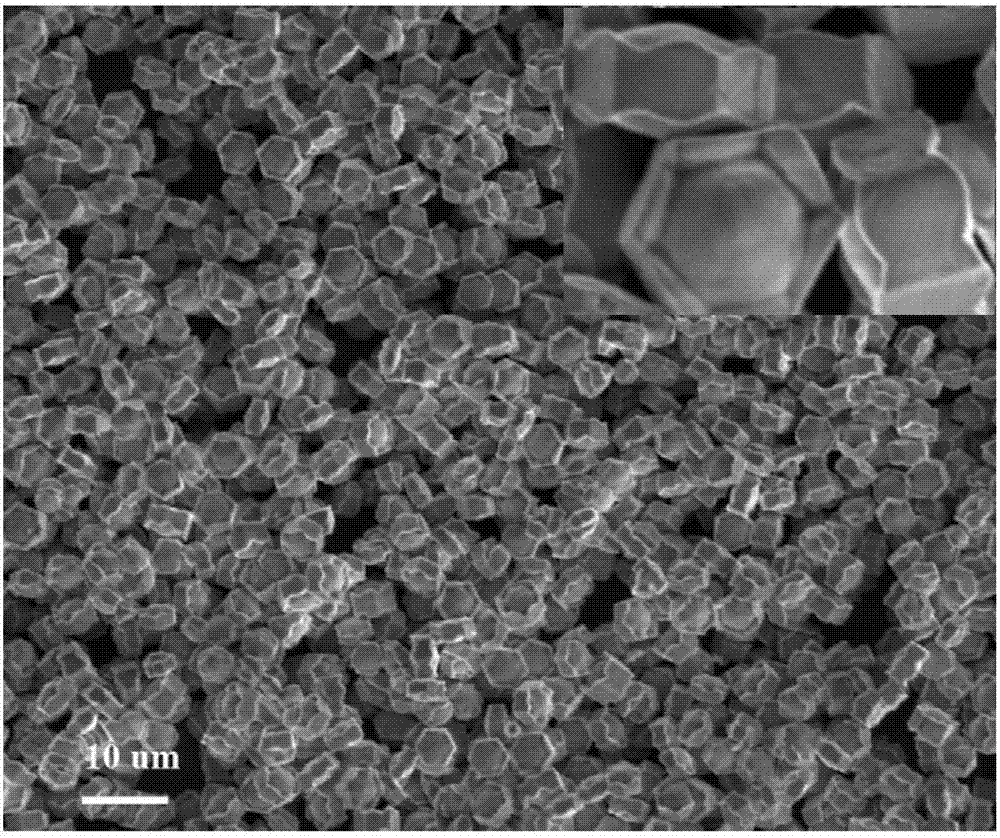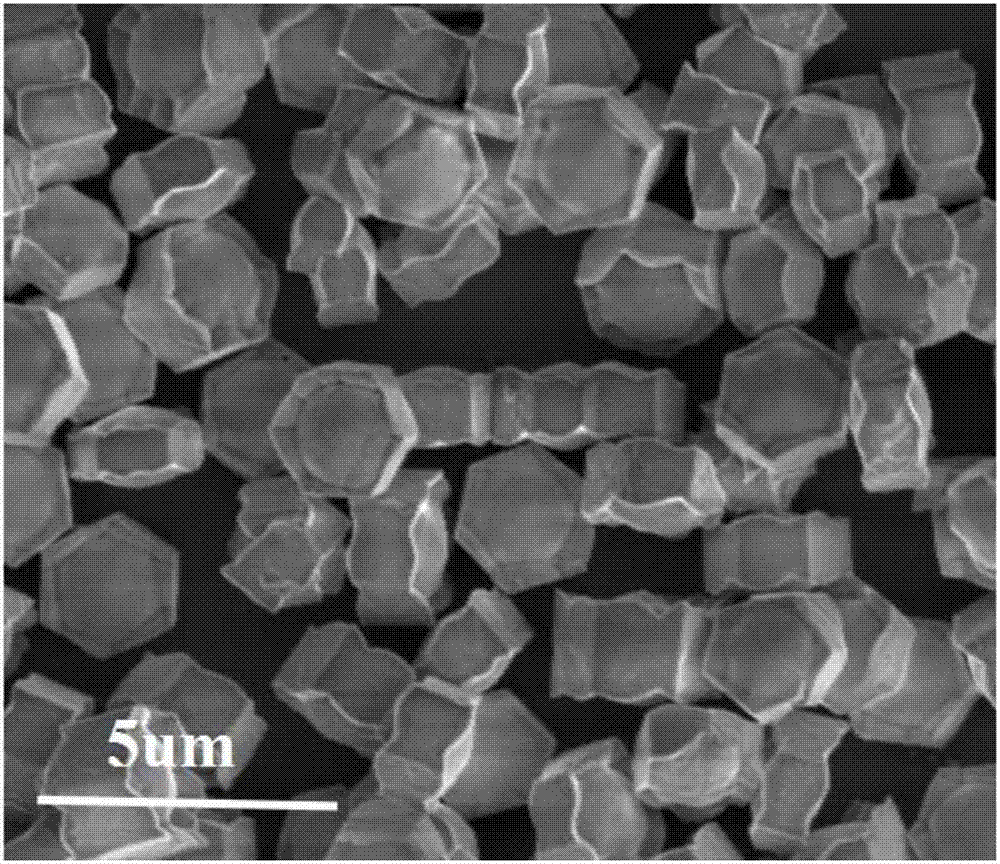Ytterbium/thulium ion co-doped hexagonal sodium fluoride yttrium microcrystals with directional emission properties of red light
A phase sodium fluoride yttrium sodium fluoride, directional emission technology, applied in the field of luminescent materials, can solve the problems of inability to synthesize rare earth luminescent materials in one step, cumbersome experimental process, limitations and the like
- Summary
- Abstract
- Description
- Claims
- Application Information
AI Technical Summary
Problems solved by technology
Method used
Image
Examples
Embodiment 1
[0027]Add 0.1485g (0.5mmol) sodium citrate into a beaker filled with 21mL deionized water, stir until the sodium citrate is completely dissolved, then add 1.17mL 0.2mol / L Y(NO 3 ) 3 Aqueous solution, 0.3mL 0.2mol / L Yb(NO 3 ) 3 Aqueous solution and 0.03mL 0.2mol / L Tm(NO 3 ) 3 Aqueous solution, fully stirred at room temperature for 30 minutes, then added dropwise 6mL of 1mol / L sodium fluoride aqueous solution to the beaker, continued to stir for 20 minutes after the dropwise addition, adjusted the pH value of the mixed solution in the beaker to 10 with ammonia water, and mixed the solution Transferred to a 40mL polytetrafluoroethylene-lined autoclave, hydrothermally reacted at 200°C for 24 hours, cooled to room temperature, centrifuged, washed alternately with deionized water and absolute ethanol, and dried at 60°C for 8 hours to obtain β-NaYF with directional emission properties of red light 4 :Yb 3+ / Tm 3+ micron crystals.
[0028] The resulting product is characterize...
Embodiment 2
[0030] Add 0.1606g (0.5mmol) sodium citrate into a beaker containing 21mL of deionized water, stir until the sodium citrate is completely dissolved, then add 1.2mL of 0.2mol / L Y(NO 3 ) 3 Aqueous solution, 0.27mL 0.2mol / L Yb(NO 3 ) 3 Aqueous solution and 0.03mL 0.2mol / L Tm(NO 3 ) 3 Aqueous solution, fully stirred at room temperature for 30 minutes, then added dropwise 6.6mL of 1mol / L sodium fluoride aqueous solution to the beaker, continued to stir for 20 minutes after the dropwise addition, adjusted the pH value of the mixed solution in the beaker to 10 with ammonia water, and mixed The solution was transferred to a 40mL polytetrafluoroethylene-lined autoclave, hydrothermally reacted at 180°C for 24 hours, cooled to room temperature, centrifuged, washed alternately with deionized water and absolute ethanol, and dried at 60°C for 8 hours. Obtained β-NaYF with Red Light Directional Emission Properties 4 :Yb 3+ / Tm 3+ micron crystals (see image 3 ).
Embodiment 3
[0032] Add 0.1341g (0.5mmol) of sodium citrate into a beaker containing 21mL of deionized water, stir until the sodium citrate is completely dissolved, then add 1.11mL of 0.2mol / L Y(NO 3 ) 3 Aqueous solution, 0.33mL 0.2mol / L Yb(NO 3 ) 3 Aqueous solution and 0.03mL 0.2mol / L Tm(NO 3 ) 3 Aqueous solution, fully stirred at room temperature for 30 minutes, then added dropwise 5.7mL of 1mol / L sodium fluoride aqueous solution to the beaker, continued to stir for 20 minutes after the dropwise addition, adjusted the pH value of the mixed solution in the beaker to 10 with ammonia water, and mixed The solution was transferred to a 40mL polytetrafluoroethylene-lined autoclave, hydrothermally reacted at 220°C for 12 hours, cooled to room temperature, centrifuged, washed alternately with deionized water and absolute ethanol, and dried at 60°C for 8 hours. Obtained β-NaYF with Red Light Directional Emission Properties 4 :Yb 3+ / Tm 3+ micron crystals (see Figure 4 ).
[0033] In ord...
PUM
 Login to View More
Login to View More Abstract
Description
Claims
Application Information
 Login to View More
Login to View More - R&D
- Intellectual Property
- Life Sciences
- Materials
- Tech Scout
- Unparalleled Data Quality
- Higher Quality Content
- 60% Fewer Hallucinations
Browse by: Latest US Patents, China's latest patents, Technical Efficacy Thesaurus, Application Domain, Technology Topic, Popular Technical Reports.
© 2025 PatSnap. All rights reserved.Legal|Privacy policy|Modern Slavery Act Transparency Statement|Sitemap|About US| Contact US: help@patsnap.com



